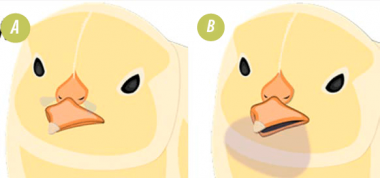RECOMMENDED

After a regular hatch day, the day-old chicks are stored for a period of time before being transferred to the farm.
Chick storage time can vary considerably from a couple of hours to overnight.
A thorough understanding of the principles inherent in chick storage is essential to preserve chick quality and performance and ensure their well-being.
This article explains these principles and highlights good storage conditions for chicks.
1.A LOGICAL EMPTYING OF THE HATCHER PREVENTS OVERHEATING
The hatcher itself provides an excellent storage environment for the chicks as it is designed to maintain a completely controlled and stable environment, with plenty of cooling and forced air flow. However, the chicks cannot stay there forever, as they must be separated from the egg shells and unhatched eggs.
As soon as the trolleys are removed from the hatcher, the airflow surrounding the day-old chicks will be reduced to the airflow present in the area to which they have been moved.
Therefore, it is essential to avoid removing all the trolleys from the machine at the same time, as it can lead to overheating of the chicks and consequent dehydration.
When removing the trolleys from the hatcher, it is best to do it in such a way that the last trolley in the machine is always the one closest to the temperature sensor, to avoid overheating of the remaining baskets.
2. MAINTAINING A SUITABLE ROOM TEMPERATURE IS VITAL
After separation of the shells and further processing, the day-old chicks will have to be stored in the chick storage room for a period of time.
As they are poikilothermic during their first weeks of life, the chicks are unable to regulate their body temperature, so they depend on the ambient temperature to remain in perfect condition.

(A) Chicks that breathe through their nostrils lose approximately 2 grams of moisture in 24 hours (B) Chicks that pant through their beaks can lose 10 grams of moisture in 24 hours
When the bird is at this temperature, it breathes through the nostrils, thus limiting the amount of moisture loss to around 2 grams in 24 hours. This phenomenon allows the birds to remain comfortable for long periods of time.
Subscribe now to the poultry technical magazine